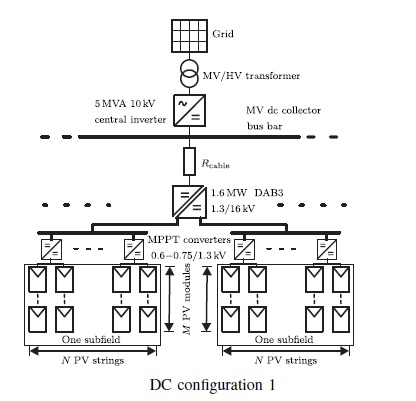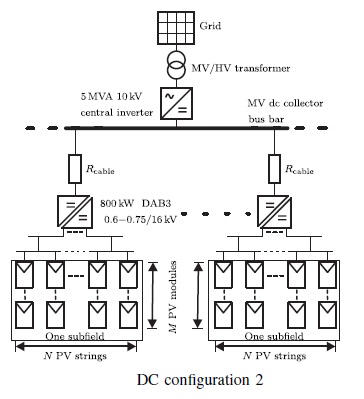- ALL COMPUTER, ELECTRONICS AND MECHANICAL COURSES AVAILABLE…. PROJECT GUIDANCE SINCE 2004. FOR FURTHER DETAILS CALL 9443117328


Projects > ELECTRICAL > 2017 > IEEE > POWER SYSTEMS
This paper presents a detailed comparison between the conventional ac collector-grid configuration and two proposed dc collector-grid configurations for large photovoltaic (PV) parks. One complete year of measured weather data at two different locations, one very sunny and the other with relatively less sun, is used for the evaluation. An already validated PV performance model is used to estimate the expected energy yield of the PV park for the given environmental and connection conditions. Loss mechanisms in different grid components in the three configurations are discussed based on the developed models. These components include the inverters, transformers, cables and dc-dc converters. A comparison of the total losses in these components helps to identify the configuration that has the potential to operate at higher efficiency and hence, generate maximum revenue.
Optimization Method.
This paper proposed two dc collector-grid configurations and compared them to the conventional ac collector-grid configuration for a utility-scale PV farm at two different geographical locations with different annual irradiation. For the comparison, a detailed analysis of the losses in the three configurations is carried out using simulations in Matlab. The loss analysis and comparison show that both dc configurations have the potential to increase the overall annual energy yield of the plant. The three configurations are also evaluated based on the available cost estimates in literature and compared using the economic metrics of payback period, NPV and ROI. The comparison indicates that the payback period is shorter for the dc configurations as compared to the ac alternative. Since the cost estimates can vary in reality, a Monte Carlo simulation is performed uncertainty in all of the cost estimates and in the estimated annual energy yield. Accordingly, there is a high probability of dc configurations performing economically better than the ac configuration in terms of the NPV and the ROI. Thus, for a uniformly laid-out PV farm, the DC2 is more attractive because of higher efficiency and better economic performance. However, for a PV farm with more non-uniformities, such as uneven terrain, mounting errors or sources of partial shading, the DC1 is preferable because of the string-pair-level MPPT.
DC Configuration 1

DC Configuration 2
